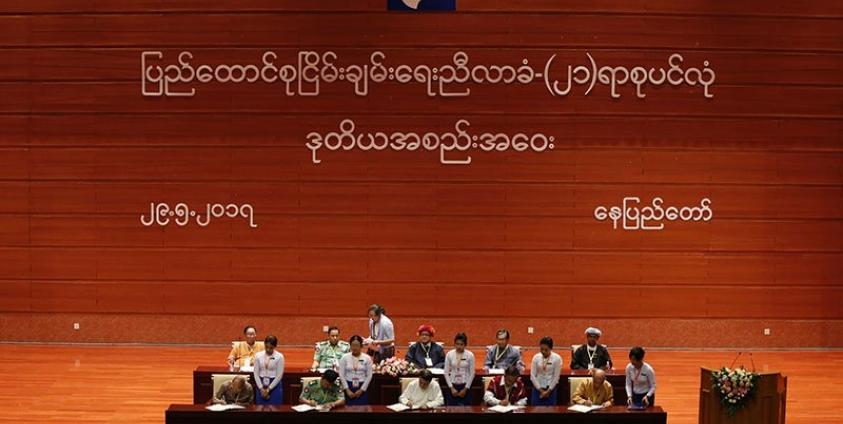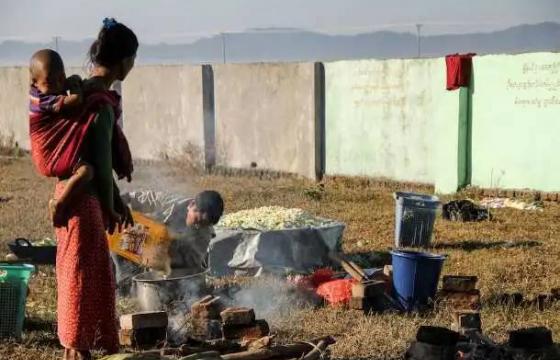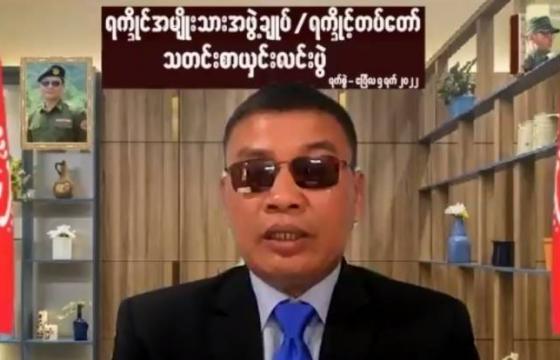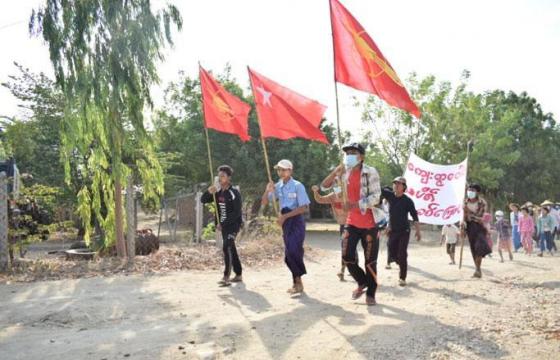The second session of the 21st Century Panglong Peace Conference ended with the revival of the word ‘secession’ a word that people have long been taboo. The conference reached agreements on 37 points, 12 of which are about politics. The government declared that these agreements are a historic breakthrough, but Major General Gun Maw from the Kachin Independence Organisation, posted via Facebook on 19 May 2017 that it was audacious that they [the government] had declared the success of the conference while there were no representatives elected by respective ethnic minorities.
Even if the agreements are a historic breakthrough, there is still no clear or tentative timeline to fulfill the agreement. In other words, we do not know exactly when the agreements will be implemented, how long it will take to be a federal union and whether the agreements will truly be implemented or not?
To quicken the peace process and utilize existing momentum, we should avoid potential barriers and contentious words such as ‘secession’, DDR - Disarmament, Demobilization, and Disintegration and non-inclusiveness. Instead, we need to find possible solutions to quicken the peace process and arrive at a genuine federal union. History teaches us a bitter lesson when the word ‘secession’ comes up.
The Historically bitter lesson of Secession
The 1947 Burmese constitution clearly stated that state [s] could secede from the union after ten years (Article 201 of Chapter 10). If two-thirds of members of the State Council voted for secession followed by the state’s citizenry in a referendum arranged by a referendum commission assigned by the president, state [s] can secede from the central government.
On 4 January 1948, Burma gained independence from Britain through the Panglong Agreement which Genral Aung San and ethnic leaders signed to build a federal union on the principle of equal politcal rights. After the first election in 1952, U Nu became the first prime minister of Burma and swept into political power. U Nu undermined not only the Panglong Agreement but also other religions as he promoted Buddhism as a state religion. Thus some ethnic minorites such as the Kachin, who are Christians, turned to insurgencies to claim fundamental political rights.
Ten years later, when the time had come for secession according to the constitution, in 1962, General Ne Win who was in charge of armed forces ousted U Nu in a military coup. He then established the “Burma Socialist Program Party” and declared the ideology of the country as the “Burmese Way to Socialism”. He took political power and controlled every sector of the administration, judiciary and legislation. His justification for the military coup was that he saved the country from the brink of fragmentation. However, it was obvious that the military coup was motivated by the possibility of secession. Thus, the hope of secession - along with the rights they sought through it - for ethnic minorities have been doomed ever since.
Secession has been a problematic and unacceptable word to every successive military regime. The recent debate over secession highlights how this word turns to disagreement. Thus, we should avoid this contentious issue in future negotiations and instead find possible solutions to pave the way to a federal union.
Federal Discourse
After the fading hope of secession, ethnic minorities started pushing for Ne Win’s government to build a federal union. Ne Win strongly rejected their aspirations as he believed that Federalism was impossible, and would destroy the existing union. Since then successive military regimes went so far as to avoid even the use of the word “Federalism”.
Decades later, the word “Federalism” was revived by the government under President Thein Sein. After several meetings between the government’s Union Peacemaking Work Committee [UPWC] and the Nationwide Ceasefire Coordination Team [NCCT] set up by 16 armed ethnic groups to negotiate a cease-fire deal with the government, the government finally agreed to establish a federal system in the country in August 2014. Since then people including Aung San Suu Kyi have reiterated federalism as a concept to strive for a political solution.
In the first session of the 21st Century Panglong Peace Conference held from 31 August to 3 September 2016, the United Nationalities Federal Council (UNCF) read their proposal in which they described the future federal union. However, the Conference reached no tangible results and instead brought about further political problems. For example, due to the Lisu National Development Party (LNDP) retracting its demand for a Lisu self-administered zone, many Kachin particularly Rawang, Laovo, Lachid, and Ngawchang tribes were disappointed with the LNDP’s claim and protested in Putao and Chipwi towns. In other words, these claims resulted in political grievances among people.
On 15 October 2016, the government announced the ‘Seven Steps Roadmap’ for national reconciliation and union peace. One of the seven steps – to build a democratic federal union in accordance with the results of the multi-party democracy general elections – emphasizes the road to federalism.
In June, 2017, State Counselor Aung San Suu Kyi toured Canada to learn about federalism. According to AFP, she said"I am happy to be here, particularly to study the federalism of Canada because it is where we are trying to go. We are trying to build up a democratic federal union."
Although the word ‘federalism’ is getting familiar to power-holders, policymakers and grassroots organizations, it has not yet come to pass. Good government is not possible in Burma with its large populations and vast territories without federalism. It is at this critical juncture that we must answer the questions: “What kind of federalism should Burma create?” “Should it be ethnic-based or state-based federalism?” “Should it be symmetric or asymmetric federal system?” “How many languages should be official? “Should the education and tax system be standardized?” “What is the central government’s exclusive jurisdiction over and what is the states’?” To answer these questions and build a federal union, we need time and cannot address them overnight.
Not plausible, but preferable: Decentralization
While preparing for a federal union, we should not forget about decentralization of power throughout Burma to embark on the path to federalism. No one can deny that federalism is a better solution. However, why does decentralization matter here? My concern, alongside many perhaps, is that decentralization should be quickly applied to distribute powers to states and regions.
It can help to solve the incumbent political problems. We have to have fiscal decentralization - who should spend, where and how much - and political decentralization. For example, chief ministers should be elected by own states. If we decentralize fiscal and political powers, we could gradually experience the concept of federalism since people have never experienced federalism and need a strong understanding of federal principles.
In early May 2017, the government acknowledged the right to self-determination for the state and allowed them to draft state constitutions. This should be welcomed by everyone as the first step towards a federal union. However, no one knows how long the federalism path will take though many people, particularly ethnic minorities, have put concerted efforts to quicken the process.
Meanwhile, decentralization cannot be underestimated and it may be a linchpin step towards a federal union.







